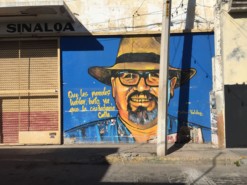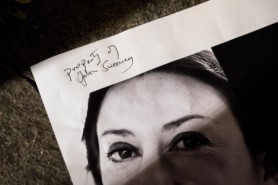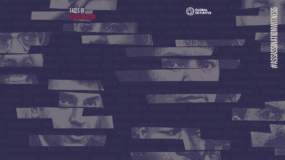Posted on 30 Jan 2019
Organized-crime groups deploy assassinations in general, and hits in particular, as a mechanism by which to achieve their political, economic, criminal and personal ends, and to influence a situation to their advantage. Targeted killings, or even the threat of a killing, generate fear among the community and are designed to send out a message – that there was a clear purpose behind the killing. Although underlying motives can be difficult to disentangle, violence increases when there is a fight for control over the illicit economy.
From our extensive research analyzing criminal assassinations, it is evident that most occur in the victims’ own personal environment – at home, at the workplace or on a route known to be regularly used by the target. One reason for this is that there is a degree of certainty around the movement of the prospective victim; another is that it affords the perpetrator the capacity to draw on local logistics and capacity (including hired killers), as well as frequently having some paid protection from within the state itself.
However, a recent and unusual case of a killing in Vienna raises interesting questions about why organized criminals might want to carry out paid hits away from their home turf.
On 21 December 2018, two young men, from Montenegro and Serbia, were confronted by a gunman outside of one of Vienna’s most famous schnitzel restaurants. Vladimir Roganovic (32) was instantly killed and 23-year-old Stefan Vilotijevic was badly wounded in the incident. Although the police launched a search for the perpetrator, their investigation continues, and the shooter has not yet been found.
Connections between the shooting in Vienna’s city centre and organized-criminal groups in Montenegro were established by the Austrian police and the Montenegrin newspapers Vijesti and DAN, both known for their investigative reporting. These sources confirmed that the victims were part of the Kavac Clan from Kotor, Montenegro. The Roganovic and Vilotijevic families were already well known to the police for their involvement in organized crime. In 2009, the Roganovic cousins Vladimir and Dusko murdered a Belgrade man, for which they were sentenced to 12 years in prison. Both were released before their sentences expired. In January 2017, Vladimir Roganovic was jailed again, this time for forging documents. Dusko Roganovic lost both his legs the same month to a car bomb and, later, their father, Niko Roganovic, was killed in a mafia-style shooting in July 2017. What all these incidents have in common is that they happened in Montenegro.
The Vilotijevic brothers, who also have close connections to the Kavac Clan, are known not only for their involvement in trafficking drugs and cigarettes from Montenegro to Europe, but two of them have also been previously arrested for murder and attempted murder – the result of a blood feud between the Vilotijevic and another local family.
One killing in a bigger war
Killings among organized-crime groups in Montenegro and Serbia have spiked since 2015, which saw the beginning of a clan war between two cocaine-smuggling gangs from Kotor. The Kavac and Skaljari clans have been in conflict with each other over a large consignment of cocaine that had gone missing in Valencia in 2014 and, since then, they have been fighting for market domination.
The local dispute soon spread across the country, in particular to the capital, Podgorica. It also spilled over the border into Serbia, and the gangs’ operations are increasingly based in Belgrade. According to Serbia’s Crime and Corruption Reporting Network, KRIK, and Radio Free Europe, 111 people have been killed since 2015 in mafia-style murders; the latest happened on 5 January 2019; 39 shootings happened in Belgrade alone, which local journalists attribute to the ongoing war between the Kavac and Skaljari clans.
The high number of cases in Belgrade provides evidence for the fact that hits are carried out in places where organized-criminal groups have the logistics and the confidence to engage in assassinations with little consequences. This is underlined by the fact that over 90% of the mafia-style murders in Montenegro and Serbia remain unsolved. It is no surprise, therefore, that the gangs feel most comfortable doing their business ‘at home’, or at least close to where their organizations are based.
At the time of writing, the gunman in the December Vienna shooting had not yet been identified. According to a journalist from Montenegro, in the past the Kavac and Skaljari clans have hired paid intermediaries from Bosnia and Herzegovina to carry out hits, and it is probable that a similar modus operandi was used for the attack in Vienna.
The idea that this hit was subcontracted is critically important, as it introduces a high level of uncertainty as to the identity of the perpetrators who ordered the hit in the first place. This contains significant symbolic value, giving the appearance that the hit came out of the blue. It also gives out a strong message between rival criminal groups, the powerful signifier being that such a killing could in the future target anyone.
Different futures
Arguably, the Austrian authorities – and others – need to be better placed when investigating, and responding to the ongoing impact of, regional organized-crime groups. According to one journalist who reports extensively on the local mafia from Montenegro, the motive is evident: the Vienna incident is part of the brutal war among the Kotor organized-criminal groups spreading beyond their domestic borders, and the shooting was planned by the Skaljari Clan. In his eyes, it is highly unlikely that Vladimir Roganovic was killed in revenge for the 2009 murder but rather to make a statement in the ongoing fight for market domination.
But why choose Vienna as a location for the killing? Hitherto, this clan war, marked by high levels of brutality and violence, had been limited to the Balkans. However, Vienna has always been home to a large diaspora from the Balkans, and Austria is seen as a friendly environment to people from the region. The incident, therefore, could suggest that a new dynamic is at play, with Vienna no longer seen as a ‘recreational area’. According to a journalist based in the Balkans, that the recent attack happened in Vienna – in broad daylight and in the town centre – is a clear indication that the mafia feels confident to play out its violent clan conflict outside of the Balkans and does not fear the consequences.
It is too early to tell, however, whether Vienna might experience more such incidents. One argument is that Vienna is no longer a safe haven for the gangs, but a place where opponents can be actively targeted. The other is that the killing is an exception, planned because the victim’s guard was down, and unlikely to be repeated in the near future. In some respects, the latter may be more likely: although this killing was successful and the perpetrators escaped, the outcry around the incident suggests that a series of similar incidents might well lead to a crackdown that would close the space for Balkan networks in Vienna.
It is probable, then, that the Vienna assassination is an outlier, perhaps driven by the opportunity that was provided by having the victims relatively exposed in the Austrian capital. If the general pattern of criminal assassinations elsewhere provides any indication, such targeted killings are more likely to take place close to home, and are unlikely to be a regular event in places relatively far removed from known turf. Should that change in the case of Vienna, it would indicate a significant shift of organized crime to a ‘new home’.



